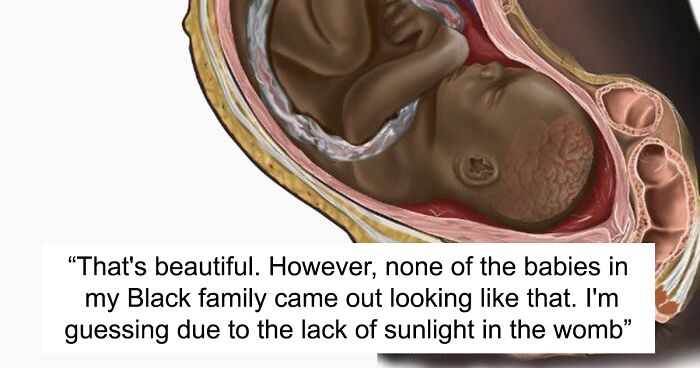
Many Online Have Never Seen A Black Fetus Illustrated, And Now Express Their Surprise After Finding One
Interview With AuthorIt is no secret that people with darker skin are represented in images less frequently than people with lighter skin tones, whether it is in advertisements or in the shades of makeup products, but what people have not realized is that Black people are misrepresented in medical images too.
Light-skinned people are represented in medical schemes and illustrations by default and not many people question it. However, Chidiebere Ibe, who is an aspiring neurosurgeon, sees that as a problem, so he decided to fill in the gaps by himself. Recently, his illustration of a fetus went viral and people came to a shocking realization that it was the first time they were seeing one which depicts a Black baby.
More info: Twitter
An illustration by medical student Chidiebere Ibe went viral as for many, it was their first time seeing a Black fetus represented in a medical scheme
Image credits: ebereillustrate
Chidiebere Ibe is a BSc Chemistry graduate from the University of Uyo, Nigeria. Now he is a medical student who is chasing his dream of becoming a neurosurgeon at Kyiv Medical University in Ukraine. He is also a self-taught medical illustrator who, as a Black man, noticed that there aren’t any illustrations representing darker-skinned people.
Bored Panda contacted Chidiebere Ibe and asked why he thinks this is the case. He explained, “It is not a norm for people. People mostly use what they are familiar with and because illustrations started mostly in the west, and all they really knew were white illustrations and because medical illustration here in Africa is a rare field and nobody was open to depicting the black people efficiently. I would say it is not a deliberate act to ignore us in these, but because of lack of experience or knowledge that we should be included too.”
Image credits: ebereillustrate
It went viral after another Twitter user, Aliyah, shared the illustration and expressed her amazement
Image credits: Liyahsworld_xo
Image credits: ebereillustrate
He merged his passion for art with his profession and focused on representing Black people in them. If you would like to see more illustrations form Chidiebere Ibe, you can click here to be directed to his website. The illustrator and future medical professional is still learning and is constantly trying to improve his knowledge of anatomy and physiology to be accurate in his illustrations.
Here are a few more of the illustrator’s works
Image credits: ebereillustrate
Image credits: ebereillustrate
Image credits: ebereillustrate
His illustration of a Black fetus went viral on Twitter when another user shared it and said that “I’ve literally never seen a black foetus illustrated, ever.” This tweet got 332k likes and people were joining the thread to applaud the young illustrator and future medical professional.
Chidiebere Ibe revealed how he felt when he came to a realisation that people with his skin tone are completely ignored in medical textbooks, “I felt bad, because I had never seen those drawings with Black people and there was no reference point for me to fall back to and learn and develop so I decided to close that gap.”
Many others shared the sentiment with Aliyah coming into a realization that they haven’t even noticed that medical illustrations depicted white people by default
Image credits: LuaBorealis
Image credits: guythewriterguy
Image credits: Rashidbelike
That was exactly the point made by Chidiebere Ibe, the author of the illustration
Image credits: vince_rhodes
Some may think that this is not that big of a deal, because a fetus looks the same regardless of what color skin it has, but the illustration symbolizes something more. It acknowledges that Black people are important too, they are worth being represented and seeing themselves in medical books. Not only that, it is also important from a medical point of view.
In a GoFundMe campaign video, the aspiring medic explains, “Textbooks are essential to medical training. They walk medical trainees through conditions they will encounter during their practice. […] Lack of diversity has important implications for medical trainees and their future patients because many conditions and signs look different based on the patient’s skin color.”
Image credits: strongforu
Image credits: keperalotus
He explains that Black people should be represented more because certain conditions look different on different skin colors
Image credits: SMucret
It’s really a challenge for him to create these illustrations as he has to figure out everything for himself. He doesn’t have any examples he can look at because all medical illustrations depict white people.
It is especially challenging when it comes to skin conditions. In an interview to CTV News, Chidiebere Ibe says, “So imagine drawing cases of eczema. And there is no drawing on Black skin, so that made it very difficult for me to work.”
Image credits: cee659
Image credits: jahondatweet
And of course, because they are people too and need to be represented in medical books because having light skin isn’t the default in real life
Image credits: theoldronin
Image credits: purplepxd
He continues to share his experience of what it was like to try to figure out everything himself: “I’m actually a self-taught medical illustrator, so it’s difficult for me to learn first, because there was no material on the internet where I could actually learn from. There were no resources, there were no YouTube videos. So that made it even more difficult for me.”
The illustrator then goes on to say that he never though that his work could get so big and he revealed to us which reactions to his work were his favorite: “‘In my 60 years in healthcare I’d never seen something like this,’ ‘I feel one day old again,’ ‘I wept when I saw this illustration,’ ‘My child wants to speak to you, she loves you.'” He really feels grateful for all the attention as his work is paying off. Chidiebere Ide said to us “It has really being a moment of total humility.”
Image credits: siinpembs
Chidiebere Ibe is still learning himself as he is a self-taught medical illustrator and medical professional
Image credits: CultureMarketi4
Medical racism has a long history. Black people were seen as disposable, because they weren’t seen as real people and they were the ones subjected to cruel experiments and exploitation.
The lack of representation in medical textbooks may perpetuate the notion and if new trainees see every race represented, maybe that could help with their biases and prejudice and of course, with diagnosing and treating certain medical conditions.
Image credits: IntersexRefuge
It is challenging not only because he is only learning but because there are no materials to work with that would be already available so he is the one making the path
Image credits: ingthehatter
Image credits: BadBlackCat13
What do you think of this illustration? Is it your first time seeing a Black fetus or a Black person in general depicted in a medical illustration too? Have you been aware of this lack of representation and do you think it is a real problem? Leave your thoughts in the comments!
51Kviews
Share on FacebookExplore more of these tags
I was hoping for no ignorant comments but that was short lived. Black babies can definitely be darker when born. They don't always come out lighter and get darker later. its sad to be so underrepresented in so many aspects in life including pregnancy and birth.
I was hoping for no ignorant comments but that was short lived. Black babies can definitely be darker when born. They don't always come out lighter and get darker later. its sad to be so underrepresented in so many aspects in life including pregnancy and birth.

 Dark Mode
Dark Mode 

 No fees, cancel anytime
No fees, cancel anytime 







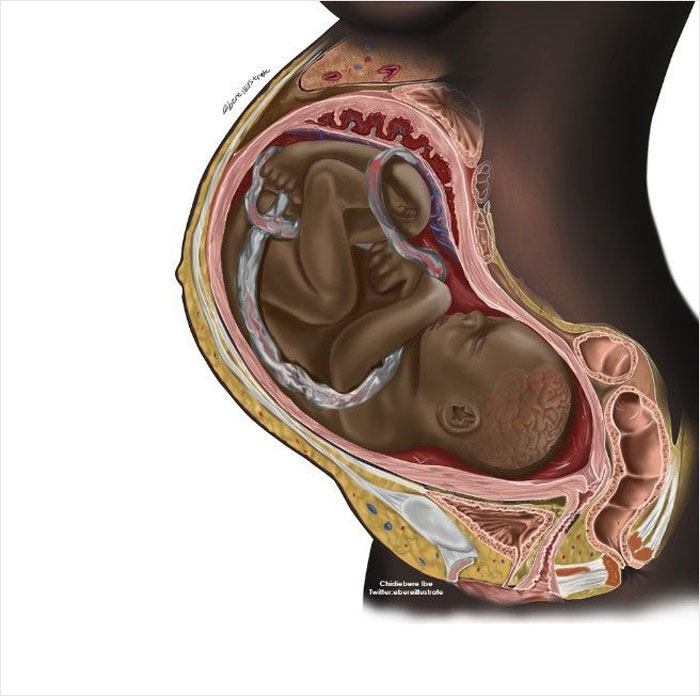
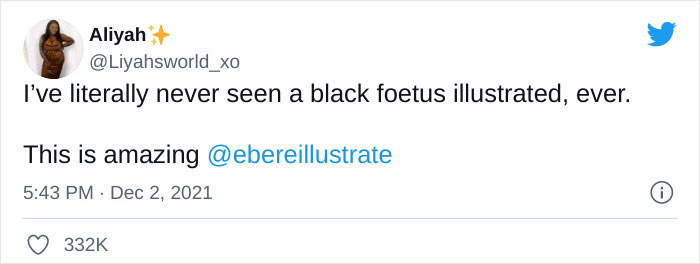
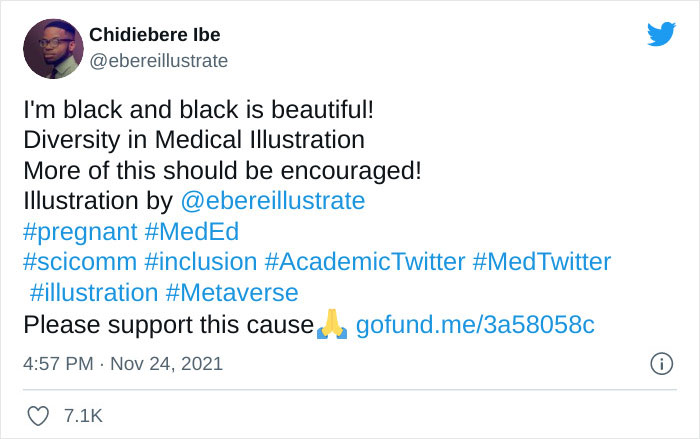
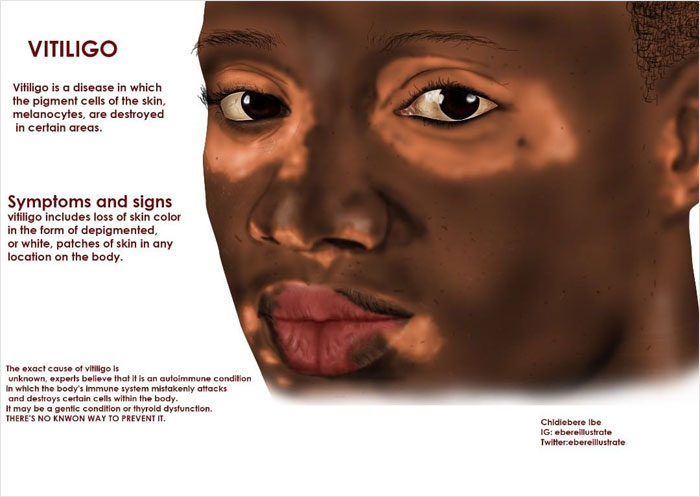
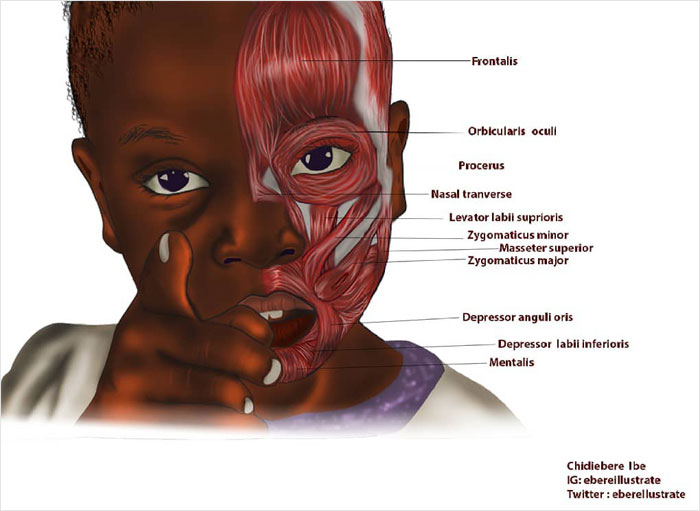
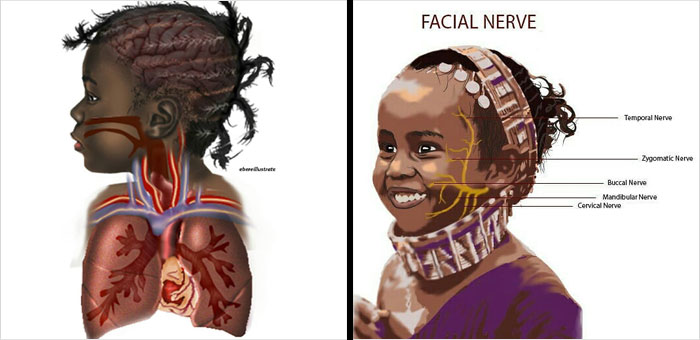
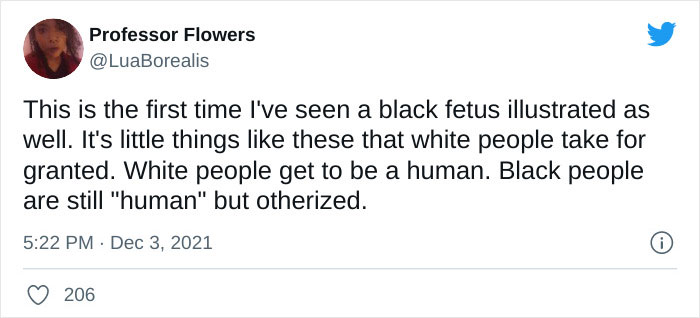
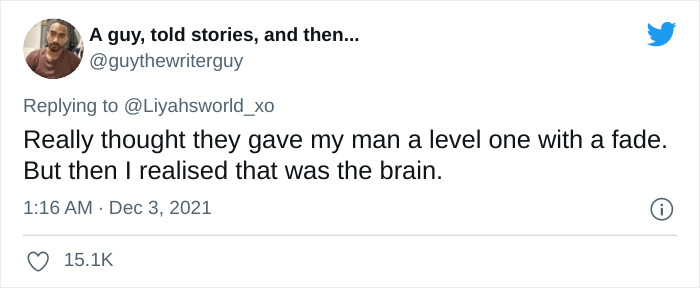
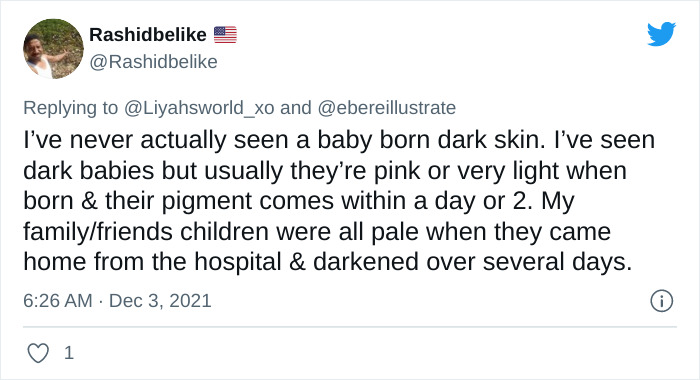
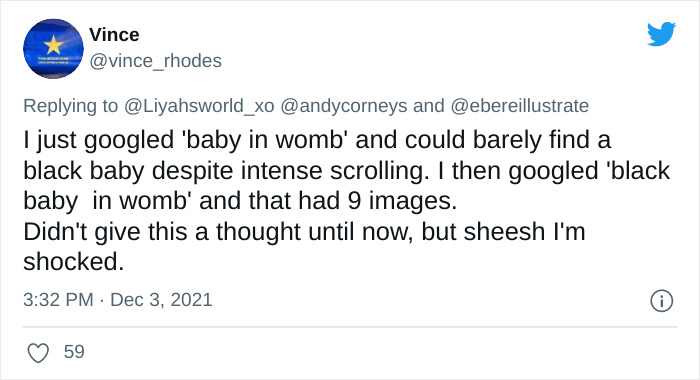
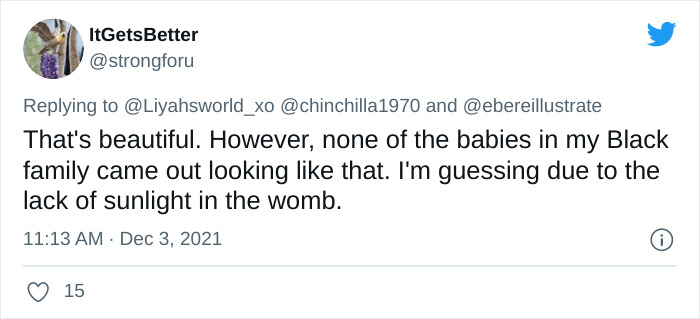
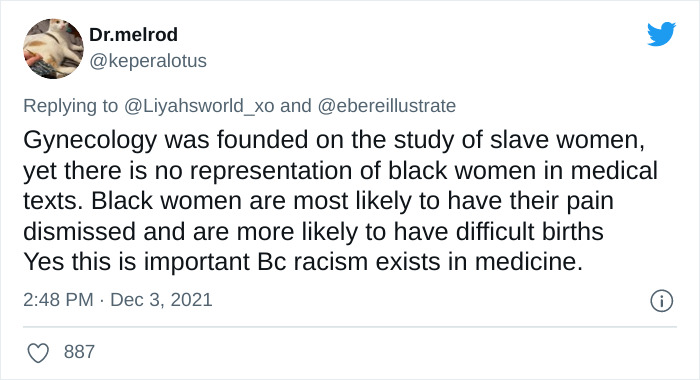
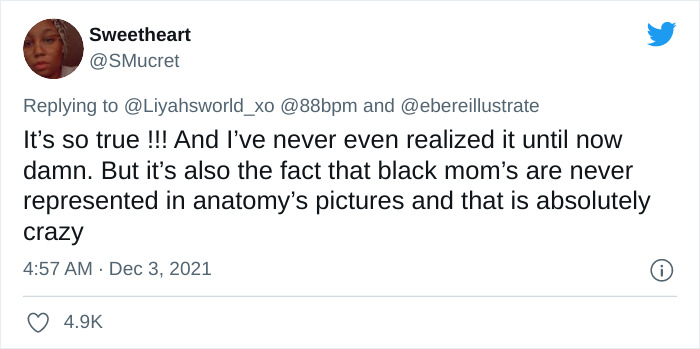
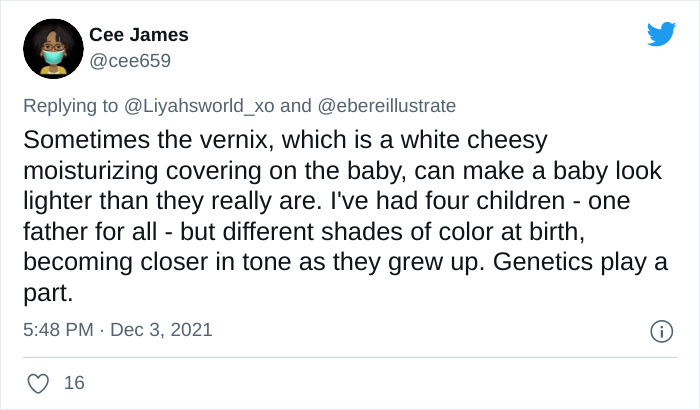
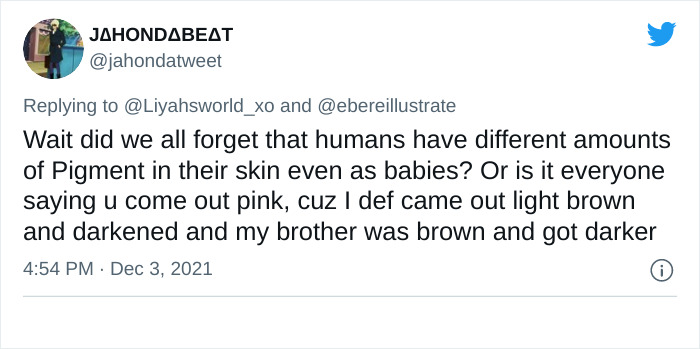
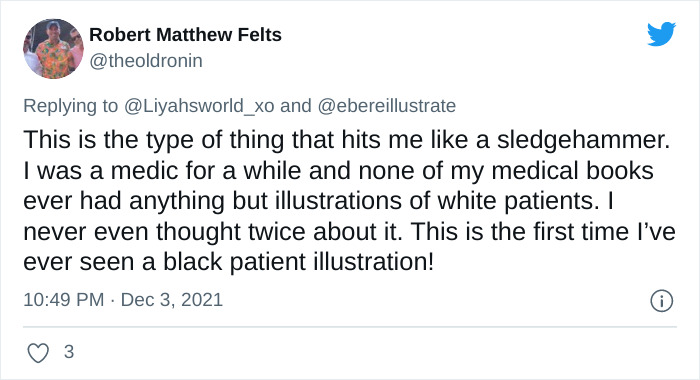
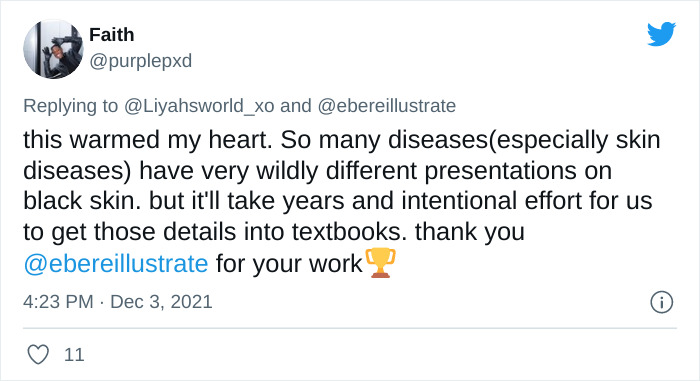
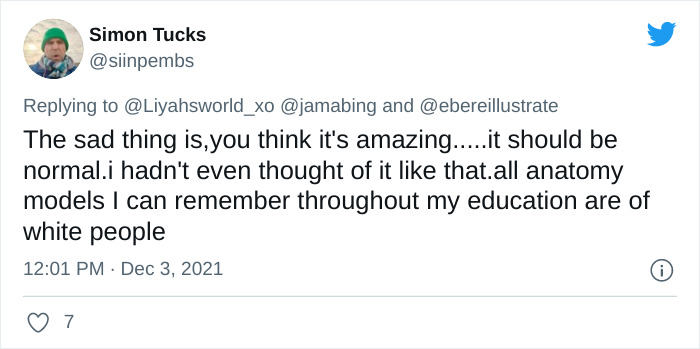
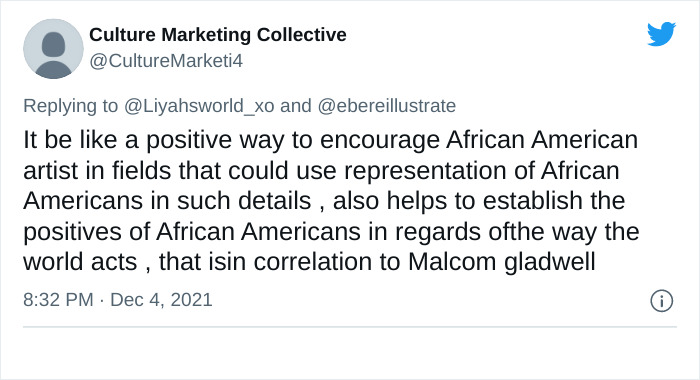
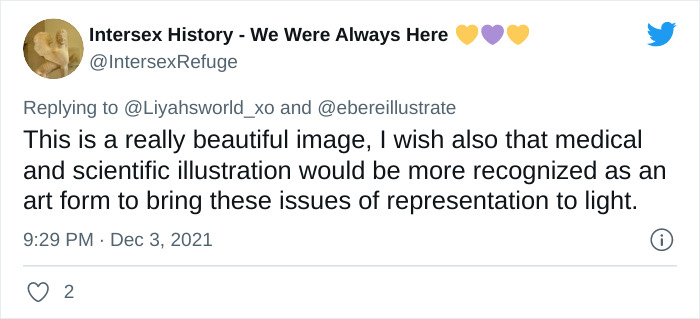
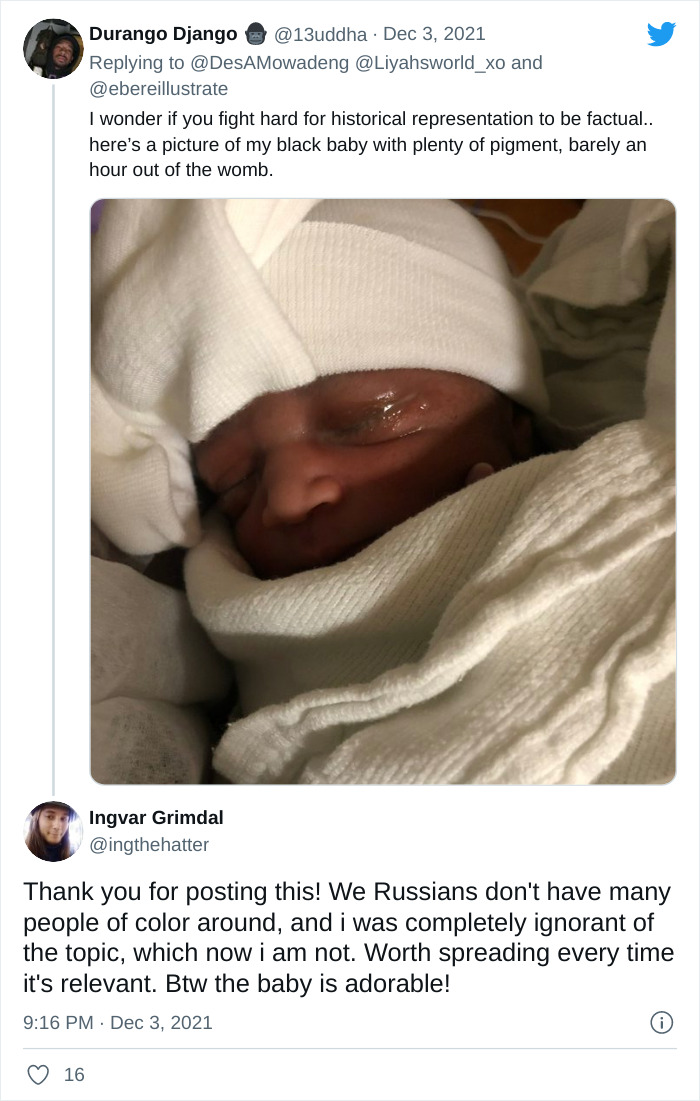
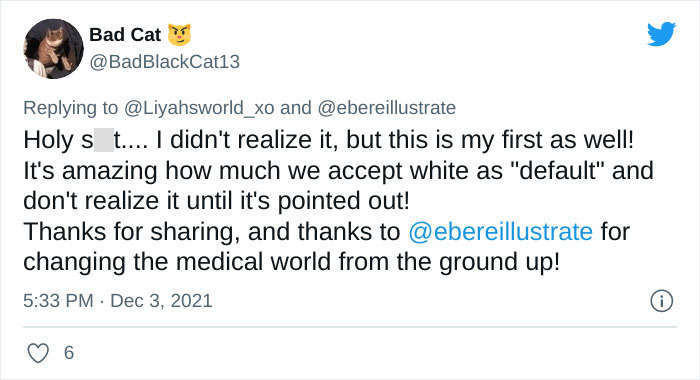












































144
55